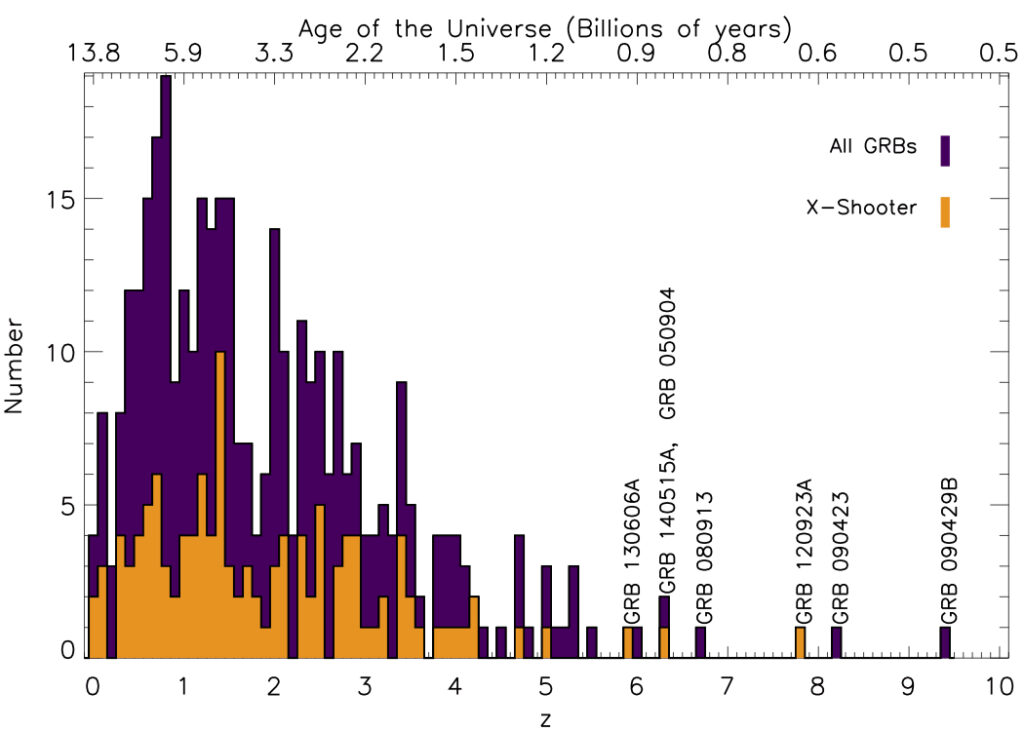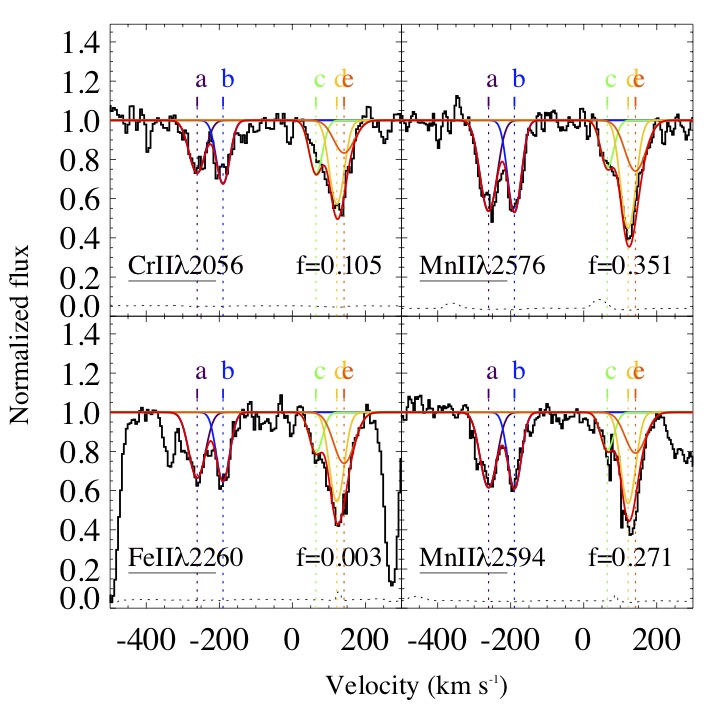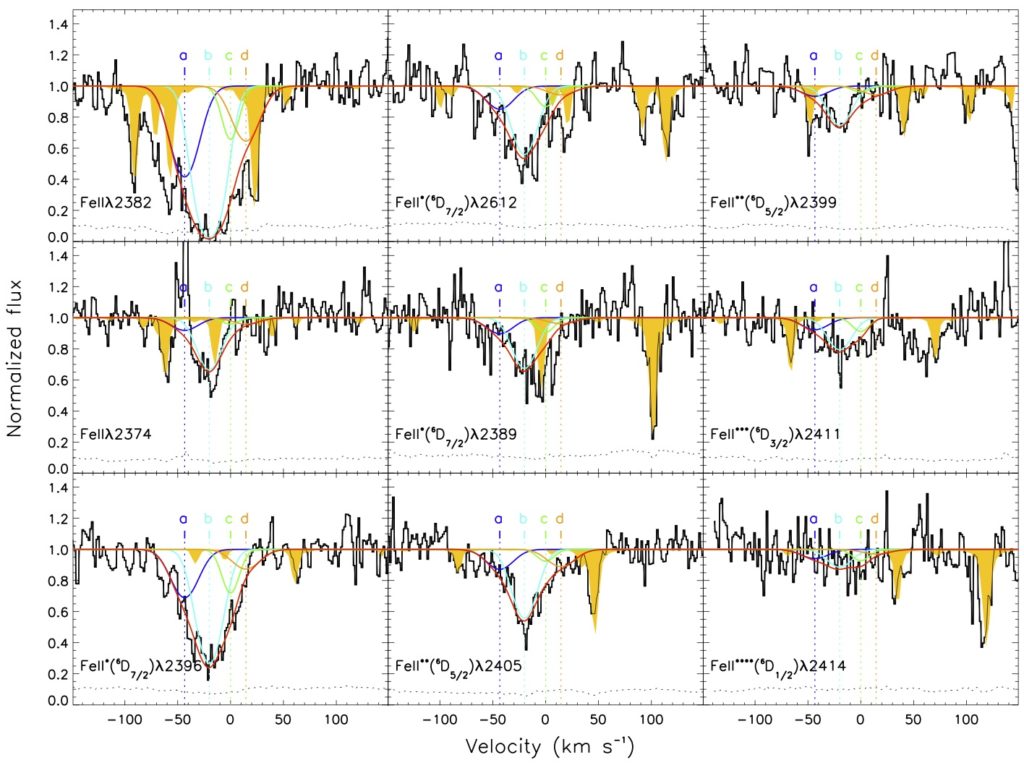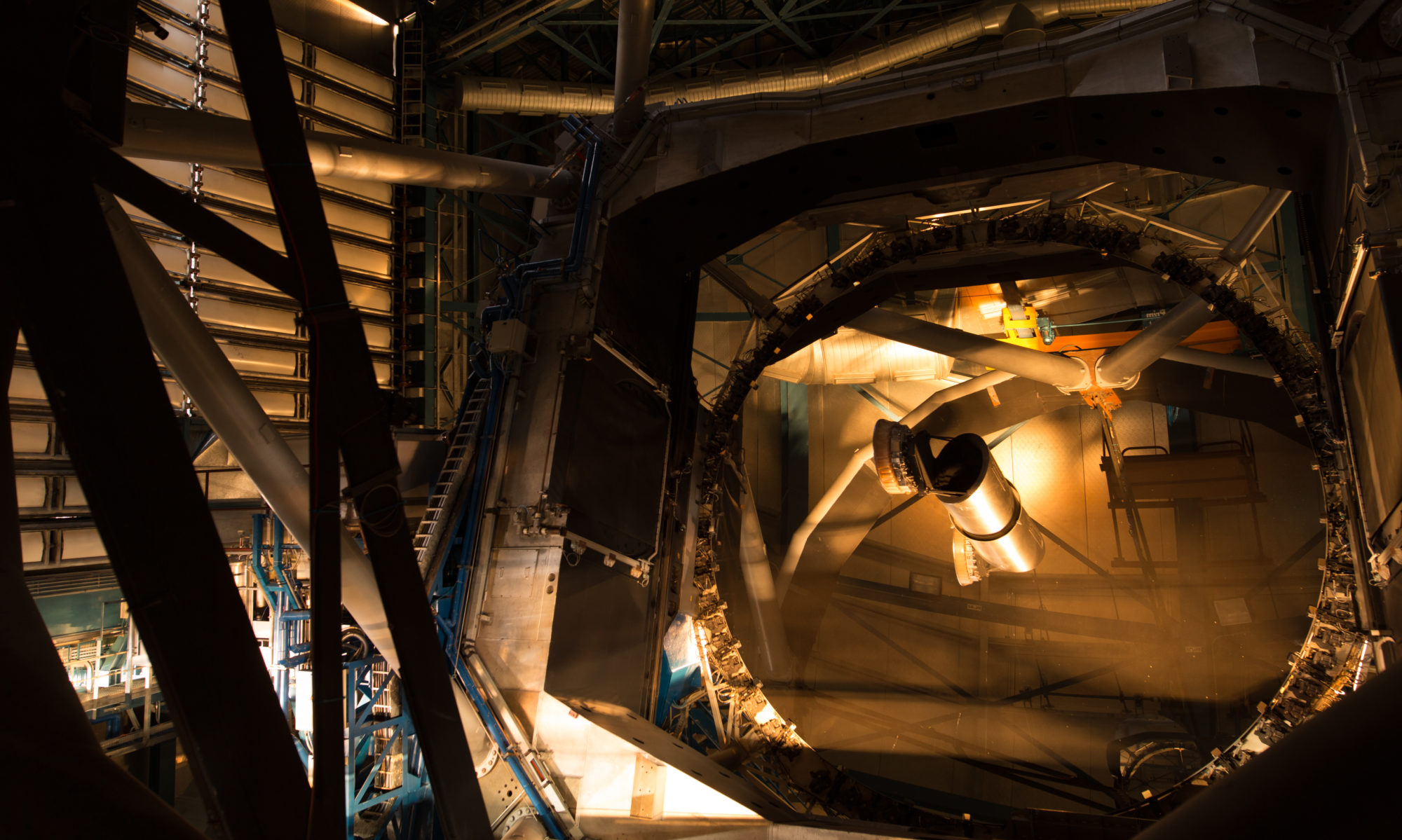Gamma ray bursts (GRBs) are the most powerful explosions in the known Universe, after the Bing Bang. They are observed from all directions and at a vast range of distances. Since long GRBs (> 2 s) are believed to originate from the core-collapse of some massive stars, they can trace star formation and can be used as cosmic beacons to study their faint host galaxies in great details, and out to high redshift. Absorption-line spectroscopy is an extremely powerful technique that can be use to unveil the chemical and kinematic properties of the gas in GRB host galaxies. See Perley et al. 2016 for a review on GRB host galaxies in emission and in absorption.

The redshift distribution of long GRBs (2020, updated from De Cia 2011, PhD Thesis)
Ongoing GRB photo-ionization

In De Cia et al. 2012 we discovered for the first time the photo-ionizing effect of a GRB on its surrounding medium, from absorption-line variability of the so-called UV34 line triplet of a highly excited FeIII level, never previously detected towards GRBs. In addition, we found that the host galaxy has very peculiar chemical properties, i.e. a marked overabundance of Fe-peak elements. This suggested episodes of massive star formation in the GRB region. In the twin paper (Vreeswijk, Ledoux, Raassen, Smette, De Cia et al. 2013), we showed the GRB radiation photo-excitates and photo-ionizes the host galaxy ISM at a distance of 200–400 pc.
GRB host metallicity, in emission and absorption
In Friis, De Cia et al. 2015 we studied the VLT/X-Shooter spectrum of GRB 121024A, a very rare case where the metallicity could be determined from both emission and absorption lines. This could in principle bring information on the GRB explosion site or help calibrating strong-emission line diagnostics at high-z. Moreover, the ISM showed multiple phases and kinematics. We detected molecular hydrogen and FeII* lines that are photo-excited by the GRB, and these two components are separated kinematically by 400 km s−1, and physically by 1–3 kpc.

Nucleosynthesis signatures in the ISM, out to z = 6

High-z GRBs give us the opportunities to explore in detail the chemical content in galaxies at the era of reionization. In the VLT/X-Shooter spectrum of GRB 130606A at z = 6 we could measure an intriguing Al overabundance (Hartoog, Malesani, Fynbo, Goto, Kruehler, Vreeswijk, De Cia et al. 2015, and using the technique of De Cia et al. 2013 to interpret the metal abundances in the gas. Making proper dust corrections is crucial to be able to unveil the potentially small nucleosynthesis signatures in the ISM in GRB hosts. Two examples are Bolmer, Ledoux, Wiseman, De Cia et al. 2019 and de Ugarte Postigo et al. 2018, both using the dust corrections of De Cia et al. 2016.
Paucity of absorption lines in some GRB afterglows
In De Cia et al. 2011b we studied the extremely energetic GRB 070125, which showed no or very weak absorption lines in the spectra. Did the GRB really explode in a halo? Probably not. In fact, weak spectral features and spectral-line poor absorbers are not so uncommon in afterglow spectra. We showed that the effect of photoionization on the gas surrounding the GRB, combined with a low N(HI) along a short segment of the line of sight within the host galaxy, can explain the lack of spectral features in GRB 070125.
Fast variability of GRB light curves
In De Cia et al. 2011a we investigated afterglow flux variability down to timescales of a few seconds, which can be caused by density fluctuations in the circumburst medium. GRB 080210 was observed with ULTRASPEC (with fast read-out with low noise frame-transfer detectors), and revealed a smooth light curve at all time scales. Although the non-detection of variability only allowed us to place marginal constraints on the circumburst under-densities for this burst, this was a pioneering study.

